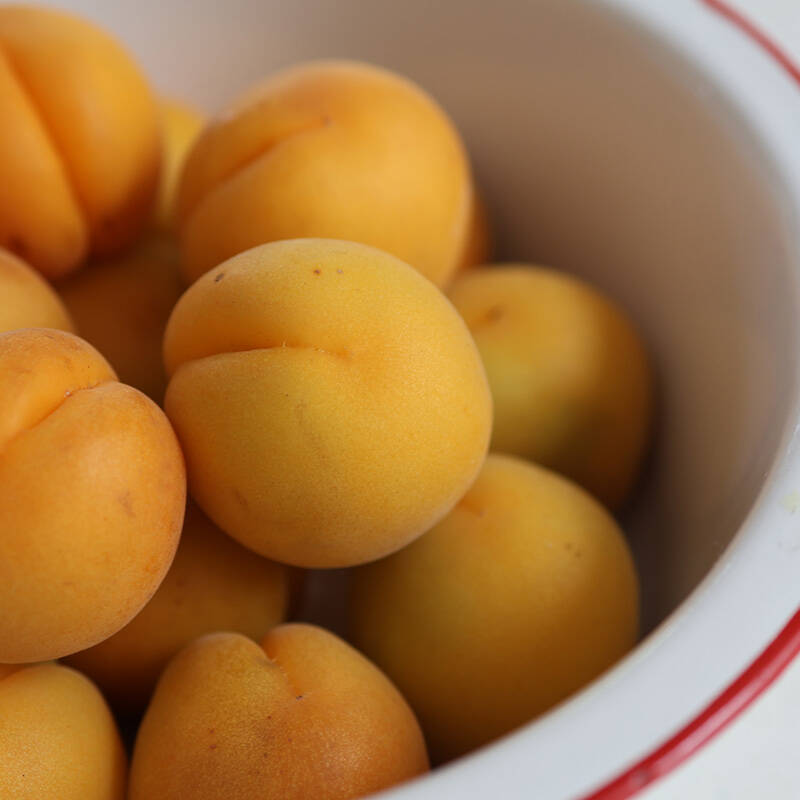When ramp leaves and garlic mustard and field garlic meet in a blender, feral goddess dressing is born. With a herbal backbone based on the green goddess dressing that was named in San Francisco in the 1920s, this wild spring iteration is an intuitively delicious riff that relies on local, seasonal greens. Native ramp leaves and invasive field garlic offer the allium punch that garlic provides in the classic version, while garlic mustard, a notorious but flavorful super-invader, fills the necessary mustard profile. Like its tame forebear, feral goddess dressing is good enough to drink through a straw and is all things to all foods: a spread for toasts and crackers, a condiment for vegetables and eggs (as well as grilled fish, chicken and meats), a dip for every crunchy crudité imaginable, and yes, a straight-up dressing for salad. It’s not a stretch to think of it as a tonic-soup, either: chilled, it is spoonably, greenly compelling.
Here’s how to make it.
Photography by Marie Viljoen.

Green goddess dressing was born in the kitchen of San Francisco’s Palace Hotel in the 1920s. But the only new thing about it was its moniker. A play of the same name was a hit on the local stage (it was made into a 1923 silent film, and later a “talkie” in 1930—all versions starring George Arliss, a white actor dressed up to appear Indian). That recipe drew heavily on already-classic raw green sauces like salsa verde (where anchovies and capers feature); persillade, the cold French sauce perfumed by the anise of tarragon or chervil; and the spring-centric Grüne Soße where buttermilk and new spring herbs are blended.
In feral goddess dressing, I have opted to keep the anise flavor (it can come from French tarragon, chervil, or the tender spring leaves of anise hyssop—Agastache foeniculum), the anchovies, and capers, and have combined buttermilk with mayonnaise.

Most Americans don’t eat enough fiber. Rather than relying on supplements, look towards leaves. Feral goddess dressing is leaf-based and balances all their fiber with powerful flavor (as well as vitamins like A, C and K). Ramp leaves and field garlic are alliums, which are packed with phytochemicals and flavonoids—good for heart health and blood sugar, and anti-inflammatory. Buttermilk offers probiotics and extra virgin olive oil, antioxidant polyphenols.






Feral Goddess Dressing
Makes 2 cups
The richly verdant hue of feral goddess dressing draws on fiber-packed leaves like arugula, watercress, or spinach, supported by the vivid intensity of ramp leaves, field garlic, and garlic mustard. (If you don’t have the latter two weeds growing nearby, substitute chives for field garlic and 3 Tablespoons mustard for the garlic mustard.) A blender makes a smoother version of this dressing, but a food processor’s chunkier result is no less appetizing.
- 2 packed cups arugula (or watercress, or baby spinach)
- 30 ramp leaves
- 1 packed cup tender garlic mustard leaves or flowering stems
- 1 cup field garlic
- 1 Tablespoon capers
- 1 Tablespoon chopped tarragon
- 4 anchovy fillets
- ½ cup buttermilk
- ½ cup extra virgin olive oil
- ¼ cup mayonnaise
- 3 Tablespoons fresh lemon juice
- 1 Tablespoon sherry (or white wine) vinegar
- ½ teaspoon salt
- ¼ teaspoon freshly ground black pepper
Wash and thoroughly dry all your fresh leaves (if they remain wet the feral goddess dressing will be too watery). Place them in the bowl of your blender (or food processor). Pulse to combine, scraping down the sides as needed. You can process until completely smooth, or stop short, and keep some bright green flecks visible. Transfer to a jug or lidded jar and keep chilled until needed. It lasts well for four days.
Serve with warm or cold eggs, on sandwiches, as a dip for crisp vegetables, as a dressing for canned or smoked seafood, as a condiment with cold roast chicken, or as a dressing for your favorite salad bowl.
See also:
- Where the Wild Ramps Grow: Lessons in Sustainable and Sensible Foraging
- Field Garlic: A Sustainable Alternative to Ramps
- How to Grow Ramps in a Pot (Plus a Rustic Ramp Leaf Quiche Recipe)












Have a Question or Comment About This Post?
Join the conversation